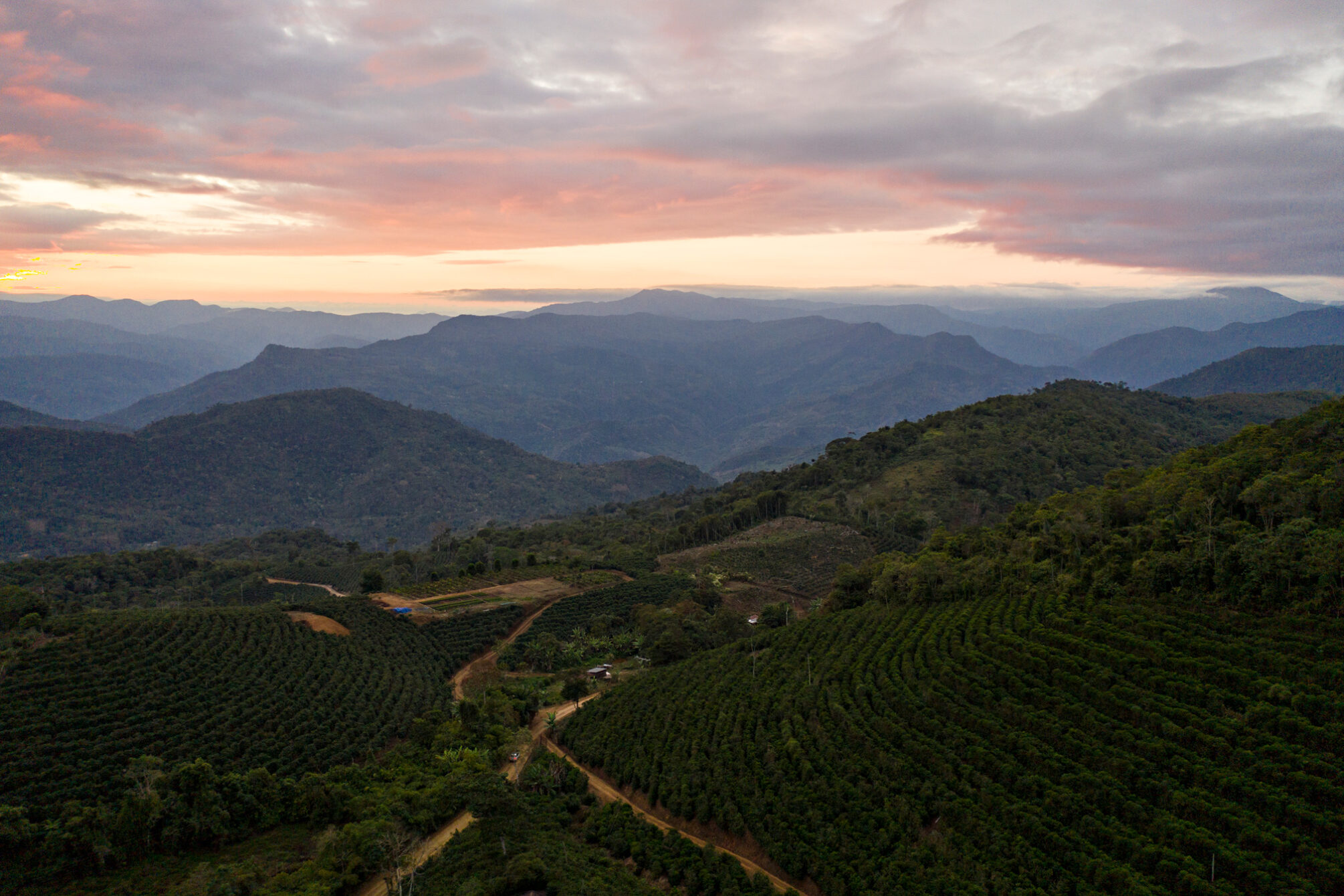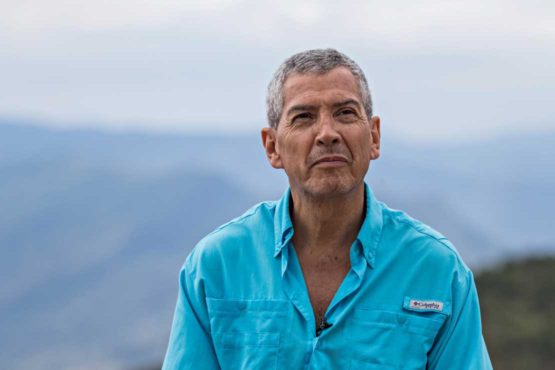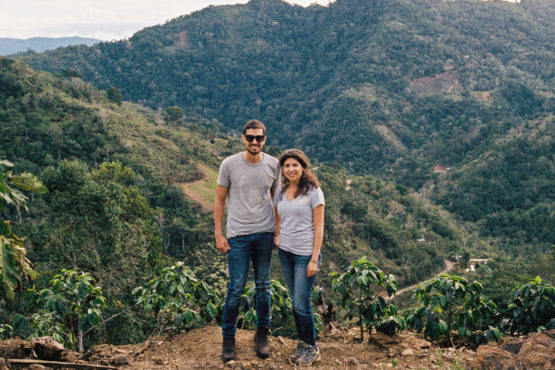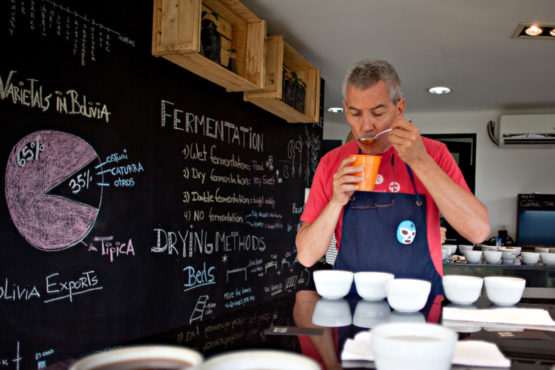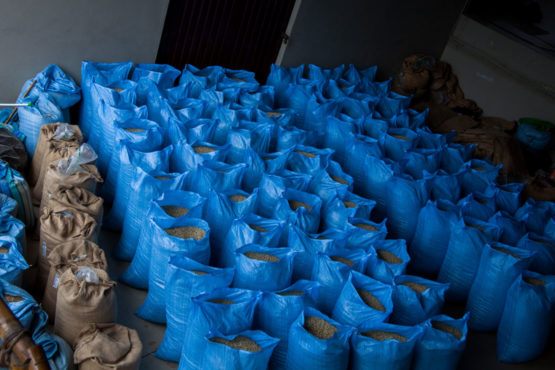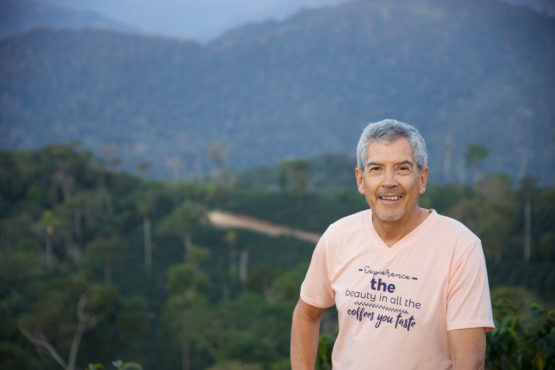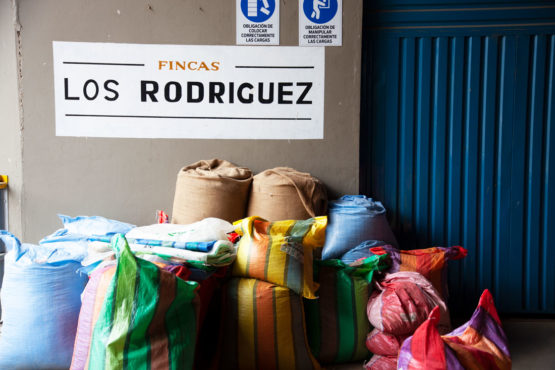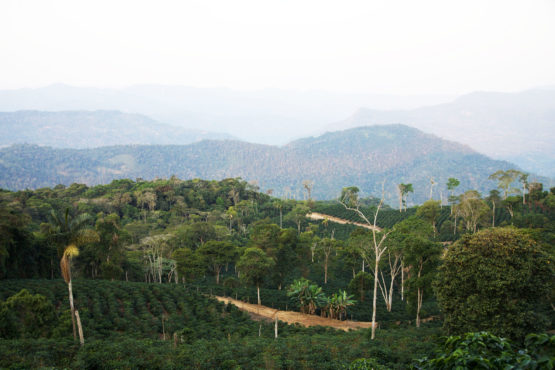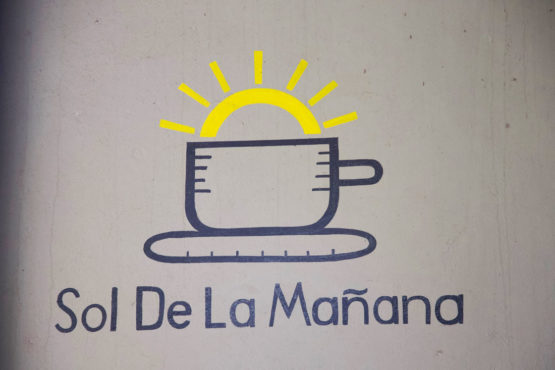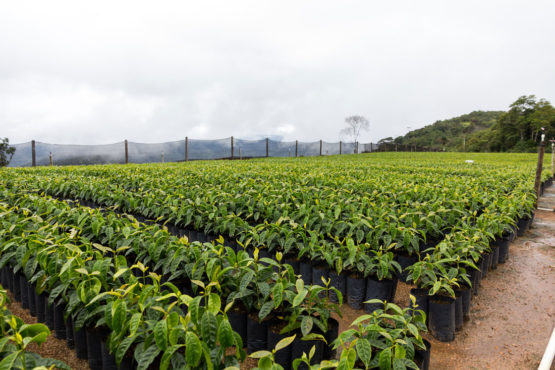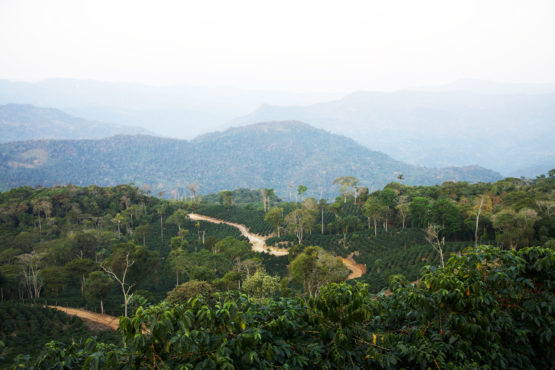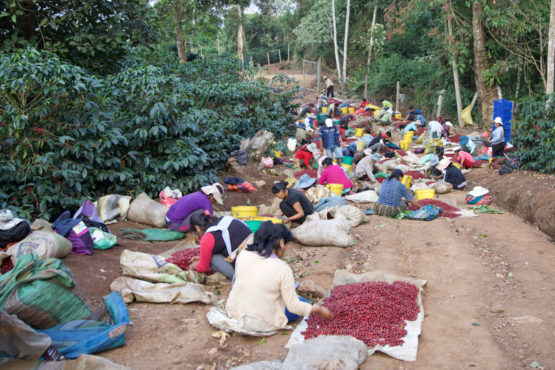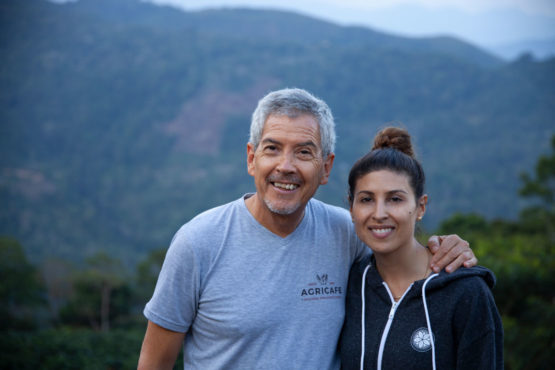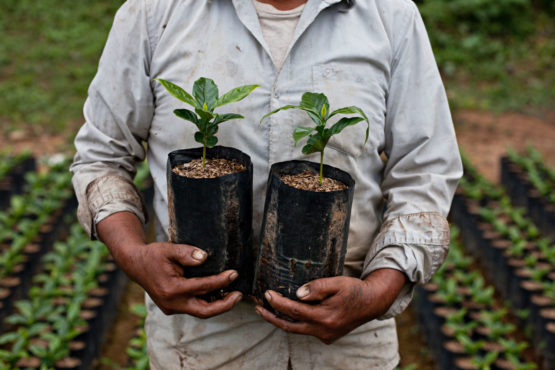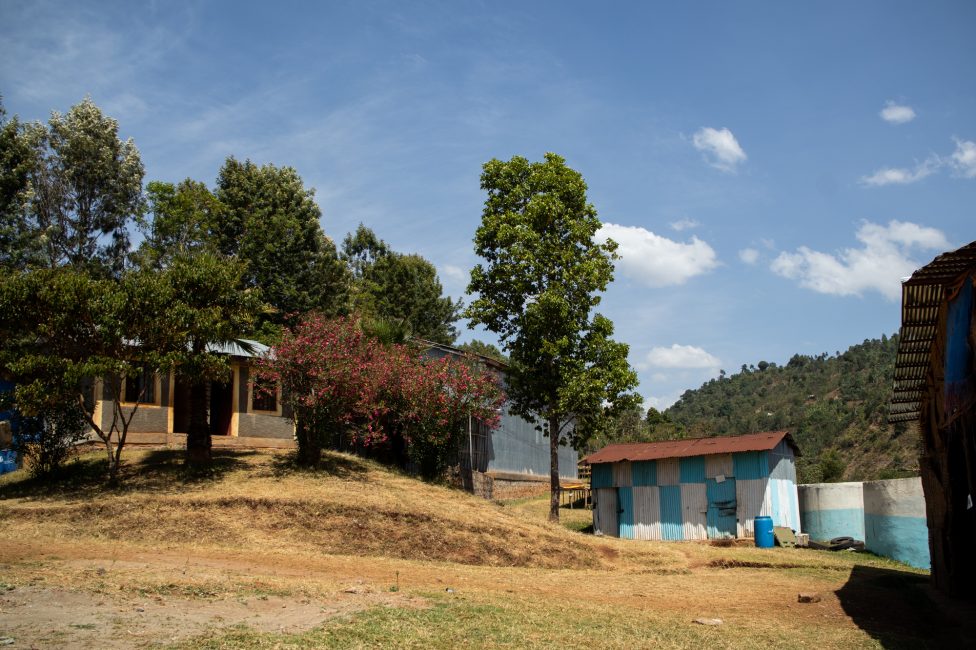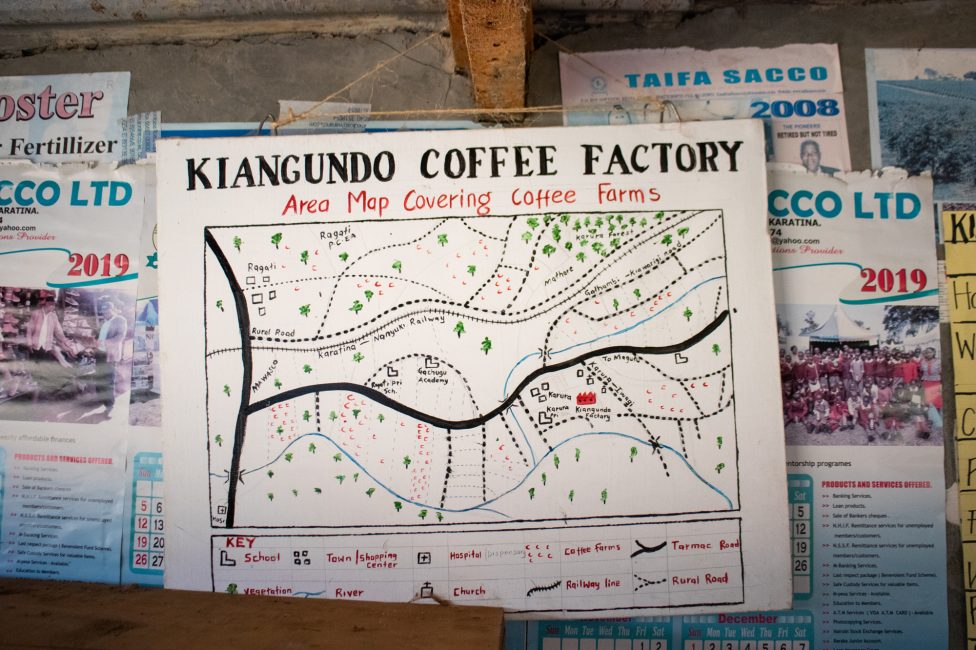La Linda Caturra
Clean and transparent, with soft apple, pear and almond notes. Full bodied and creamy, with great balance and sweetness.
This 100% Caturra lot comes from La Linda, a small farm owned by Pedro Rodriguez and his family. Over the last decade, Rodriguez has worked tirelessly to build production and expand the market for Bolivian specialty coffee, helping hundreds of local farmers recognise and realise the potential of their land and crops.
La Linda is located in the colony of Bolinda, which lies in a lush, steep mountain valley around 10 kilometres outside of the town of Caranavi. The colony of Bolinda was founded 52 years ago and was once known as ‘Bolivia Linda’ or ‘Beautiful Bolivia’. Over the years this name was shortened to Bolinda, and it is now one of the larger settlements in the area.
Coffee production in Bolivia is, and always has been, very small. Pedro began his journey in coffee by working with small producers in Caranavi, building a wet mill to process their coffee, and educating producers to selectively handpick their cherries. He also started to process small micro-lots from each of the producers, and because of the unique combination of heirloom varieties, rich soil and incredibly high altitudes, the results were outstanding.
However, despite increased international recognition for its quality, coffee production in Bolivia began to rapidly decline over a very short period of time for many reasons. Some farmers switched to coca – grown for the drug trade and illegal to produce in Caranavi – because it provided them with a high year-round income. For those still in coffee, their yields were also declining as a result of ageing coffee plantations, unsophisticated farming techniques, and leaf rust. The combination of these factors resulted in the nation’s coffee production declining by more than half.
In 2012, as leaf rust started to obliterate the production in many small farms, Pedro and his family began to invest in their own plantations, fearing that coffee production in Bolivia would disappear completely. This, they recognised was critical in order to guarantee a minimum level of supply and thus ensure the future sustainability of their business. They acquired land in Caranavi, near their Buena Vista mill and created their first farm, Finca La Linda. “This is where the dream started,” Pedro says.
Today Agricafe has 12 farms, and around 130 hectares of coffee under the banner of ‘Fincas Los Rodriguez’. Seven of these are in Caranavi, in the department of La Paz, and the remaining five are in Samaipata, in the department of Santa Cruz in Bolivia’s east.
The Rodriguez family’s approach to coffee production has been extremely methodical, innovative and scientific. Along the way, they consulted with leading specialty coffee agronomists from around the world to help them produce exceptional coffee and build sustainable and healthy farms. A wide range of varieties has been trialled, along with different farming techniques to optimise quality and output. They have carefully documented their findings at every step of the way, and continue to innovate and invest in improvements to produce the very best quality coffee they can.
The Rodriguez farms are some of the most organised and beautiful we have come across. Coffee is well spaced in neat rows and meticulously organised by variety, making picking and lot separation much easier to manage than on more traditional farms in the region. The farms are vibrant, luscious and healthy, and produce exceptional quality and yields.
ABOUT LA LINDA
La Linda is 10.5 hectares in size. It was established in 2013, and its first year of production was in 2015. We feel very close to this farm – we were there the first year it was planted and have watched it grow every year since.
With a subtropical climate, rich soil and a privileged location between two forest-covered mountains, La Linda is an ideal place for coffee growing. The farms high altitude – about 1,566 metres above sea level – helps to ensure the slow maturation of the coffee cherries; at high altitudes, night-time temperatures are more stable, and during the day temperature is mild. This allows more time for a higher concentration of sugars to develop in the cherry and bean, which in turn helps produce an incredibly sweet and clean coffee.
The Rodriguez family have made the decision to maintain 60% of La Linda as a natural reserve. A stream cuts through the farm, where many exotic animals and birds come to drink and bathe. The area enjoys a diversity of local flora and fauna, which contribute to the overall ecosystem of the farm and its soil health and provide shade for the coffee trees.
In the early days at the farm, Pedro and his family visited La Linda often. It was a place we went to breath, brew a coffee and enjoy nature. We kept dreaming about being able to change the complicated situation Bolivian coffee was going through due to the drastic fall of production and farm abandonment.” They explain. The farm holds a special place in [our] hearts… because of the fundamental role it’s played into making Los Rodriguez dream a reality”
Pedro and his family have invested a lot of time and effort into trying to make this a ‘model’ farm that other producers in the area can learn from. Their learnings have also been used to inform the best ways to plant and manage their future farms. Daniela explains that “La Linda was the reason we decided to start producing high-quality coffee … we acquired the land as an experiment to see if the company could produce high-quality coffee. Starting with our own knowledge and making plenty of mistakes, La Linda has turned into one of our biggest success stories. What we have learned at La Linda has developed and shaped the plans for our future farms and become the base of our Sol de la Mañana program”.
HOW THIS COFFEE WAS PROCESSED
At La Linda, Pedro hires pickers from the Bolinda community to carefully handpick the coffee during the harvest. These pickers are trained to select only the very ripest cherries, and multiple passes are made through the farm throughout the harvest to ensure the coffee is only picked at its prime.
This Caturra lot was carefully picked and processed on the same day at the Rodriguez family’s Buena Vista mill. After being weighed it was carefully sorted by weight using water, and any floaters were removed. It was then pulped and ‘dry fermented’ without water for around 46 hours.
The coffee was then laid out to dry on raised beds and regularly turned for up to 48hrs, before being finished in a mechanical dryer for around 35hrs, with temperatures no higher than 40˚C. When the coffee reached 16% humidity it was rested for five hours in a silo, and then carefully dried until it reached 11.5% humidity.
Once the coffee was dry, it was transported to La Paz where it was rested before being milled at Agricafe’s dry mill, La Luna. At this state-of-the-art mill, the coffee is meticulously hulled and sorted using machinery and also a team of sorters who carefully sort the coffee by hand under UV and natural light. The mill is one of the cleanest and most impressive we have seen – you can read more about it here.
WHAT IS IN A NAME?
La Linda, which means the beautiful or the lovely, gets its name from the first nursery of Java trees that were planted on the farm and flourished. The farm was named one morning while Pedro was having breakfast at the farm – as he sipped his coffee and gazed out at the landscape before him and thought about what a beautiful sight it was. And so, La Linda it was!
WANT TO KNOW MORE?
Read about Pedro Rodgriguez’s journey in coffee here, and about Agricafe’s Sol de la Mañana program here, and about Bolivian coffee more generally here.
